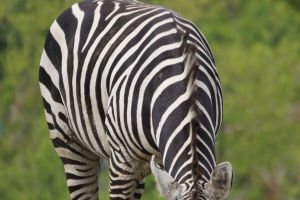Elk is a large herbivore, mainly distributed in wetlands or swamps with lush water and grass. Elk are native to the swamps of the middle and lower reaches of the Yangtze River in China and feed on green grass and aquatic plants. They are gregarious, good swimmers, and like to feed on tender grasses and aquatic plants. They were once widespread in East Asia.
Elk are generally 170-217 cm long and 60-75 cm long tail. Females are slightly smaller than males. The average elk weighs 120-180 kilograms, and the adult male elk can weigh up to 250 kilograms. Elk have longer horns and shed their horns once a year in December, while female elk have no horns. Elk have thick necks and backs, and thick limbs, making them suitable for walking in swamps. Reddish-brown in summer and brownish-yellow in winter.
Many deer animals such as sika deer and bark deer mainly live in mountain forests, while elk is a wetland deer species that likes muddy, wet swampy areas. Due to different habitats and different skills required for survival, elk develop a unique appearance.
People always say that their faces are narrow and long. As everyone knows, this long face is closely related to the survival of the elk. Elk are easily attacked by predators when drinking water and eating aquatic plants. Fortunately, they have a "big long face". When their mouths reach underwater for food, their eyes can stay on the water surface, and they can always observe the surrounding wind and grass.
Elk's antler branches stretch back, unlike most deer species. As a wetland animal, the elk often roams along the reed-covered waters. When they walk through the lush wetland plants, the uniquely shaped antlers are not easily hooked and entangled due to the backward branches of the branches. The unique horns also help them scratch their itch. When the elk's back is unbearably itchy, they can lift their heads and rub their antlers to relieve the itching.
The elk is a very gentle animal, and even when it comes to competing for a mate, it doesn't engage in fierce duels. Generally, duels last no more than 10 minutes, the loser turns around and leaves, and the winner no longer chases. When humans get close to their cubs, the cubs' calls will only attract the mother deer to watch from a distance. Elk do not have a strong ability to fight back, so they have poor ability to escape from enemies and are easily hunted by natural enemies and humans.


